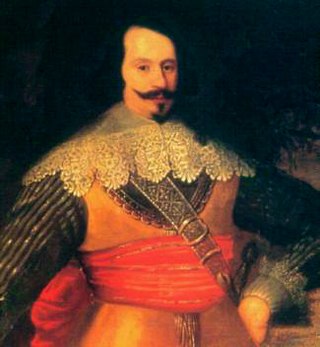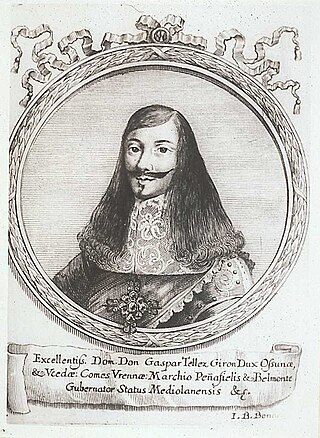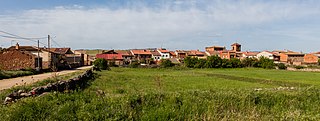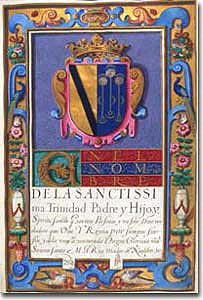
Duke of Osuna is a Spanish noble title that was first awarded in 1562 by King Philip II of Spain to Pedro Girón de la Cueva,. Pedro was also Viceroy of Naples, (1582–1586), Ambassador in Portugal and 5th Count of Ureña.

Luis Francisco de Benavides Carrillo de Toledo, Marquis of Caracena, Marquis of Fromista was a Spanish general and political figure. He served as Governor of the Habsburg Netherlands between 1659 and 1664.

Gaspar Téllez-Girón, 5th Duke de Osuna, 5th Marquess of Peñafiel, 9th Count of Ureña and other lesser titles, was a Spanish general and a Grandee of Spain.
The Treaty of Lisbon of 1668 was a peace treaty between Portugal and Spain that was concluded at Lisbon on 13 February 1668 with the mediation of England in which Spain recognised the sovereignty of Portugal's new ruling dynasty, the House of Braganza.

Count of Linhares was a Portuguese title of nobility created by a royal decree of king John III of Portugal dated from May 13, 1532, and granted to Dom António de Noronha, 2nd son of Pedro de Menezes, 1st Marquis of Vila Real.

Montejo de Tiermes is a municipality located in the province of Soria, Castile and León, Spain. In 2010 the population of Montejo de Tiermes (municipality) was 198 inhabitants, 126 men and 72 women. Montejo de Tiermes (locality) had a population of 58 inhabitants on 1 January 2010, 41 men and 17 women.

Marquis of Vila Real was a Portuguese title of nobility created by a royal decree, dated from 1 March 1489, by King John II of Portugal, and granted to Dom Pedro de Menezes, also known as Peter II of Menezes, 3rd Count of Vila Real.

The House of Carrillo is a Spanish noble house that traces its origins from the ancient Kingdom of Castile. There are several branches that exist such as Carrillo de Albornoz, Carrillo de Mendoza, Carrillo de Figueroa, Carrillo de Toledo and Carrillo Tablas among others. There are also several variations in spelling of the surname Carrillo such as "Carillo" or "Sciarrillo". Records prove that both surnames are one and the same.

Cristóbal Gómez de Sandoval-Rojas y de la Cerda, known as the Duque de Uceda, but also titled second marquis of Cea, fifth marquis of Denia, and knight of the order of Santiago was the official minister of state, also known as the valido or valued one, for King Philip III of Spain. He engineered the exile of his father the Duke of Lerma, from the court, and his own succession to the position.

The Andalusian independentist conspiracy in 1641 was an alleged conspiracy of Andalusian nobility for Andalusia to secede from Spain. The conspiracy was brought to an end in summer 1641 after the plans of rebellion were discovered.

The Battle of Valenciennes was fought on 16 July 1656 between the Spanish troops commanded by John Joseph of Austria and the French troops under Henri de la Tour d'Auvergne, Vicomte de Turenne, in the outskirts of the city of Valenciennes in the Spanish Netherlands during the Franco-Spanish War. After a period of Spanish recovery following the Peace of Münster in 1648, France went again on the offensive in 1654, having succeeded in suppressing internal rebellions, and took several towns in the province of Hainaut over the course of two years. On early 1656, Turenne was instructed by the French court to continue the offensive. He intended at first to besiege Tournai, but realising that it had been strongly reinforced by the Army of Flanders under the newly appointed John Joseph of Austria, illegitimate son of Philip IV of Spain, he went instead to besiege Valenciennes, in the course of the Scheldt River.

Lamoral, 1st Prince of Ligne was a diplomat in the 17th century.

Luis Francisco de la Cerda y Aragón, 9th Duke of Medinaceli, 9th Duke of Medinaceli, was a Spanish noble and politician.

Count of Chinchón is a title of Spanish nobility. It was initially created on 9 May 1520 by King Charles V, Holy Roman Emperor, who granted the title to Fernando de Cabrera y Bobadilla.

Íñigo López de Mendoza y Mendoza was a Spanish noble, military, diplomat and politician in the service of King Philip II of Spain. He was the 4th Count of Tendilla and 3rd Marquis of Mondejar.
Don Fernando de Borja y Aragón or Ferran de Borja y d'Aragón was a Spanish noble from the House of Borja and the House of Castro. He was the third Count of Mayalde, Viceroy of the royal house, and the Prince of Esquilache.
Juan de Tovar or Juan Fernández de Tovar, later known as Martín Fernández de Tovar, was a Castilian nobleman, belonging to the House of Tovar, Lord of the villages of Cevico de la Torre and Caracena, and Chief-guard to King Henry IV of Castile.
Francisco María de Paula Téllez-Girón y Benavides, 6th Duke of Osuna, 6th Marquess of Peñafiel, 10th Count of Ureña, was a Spanish noble, diplomat and a Grandee of Spain.














